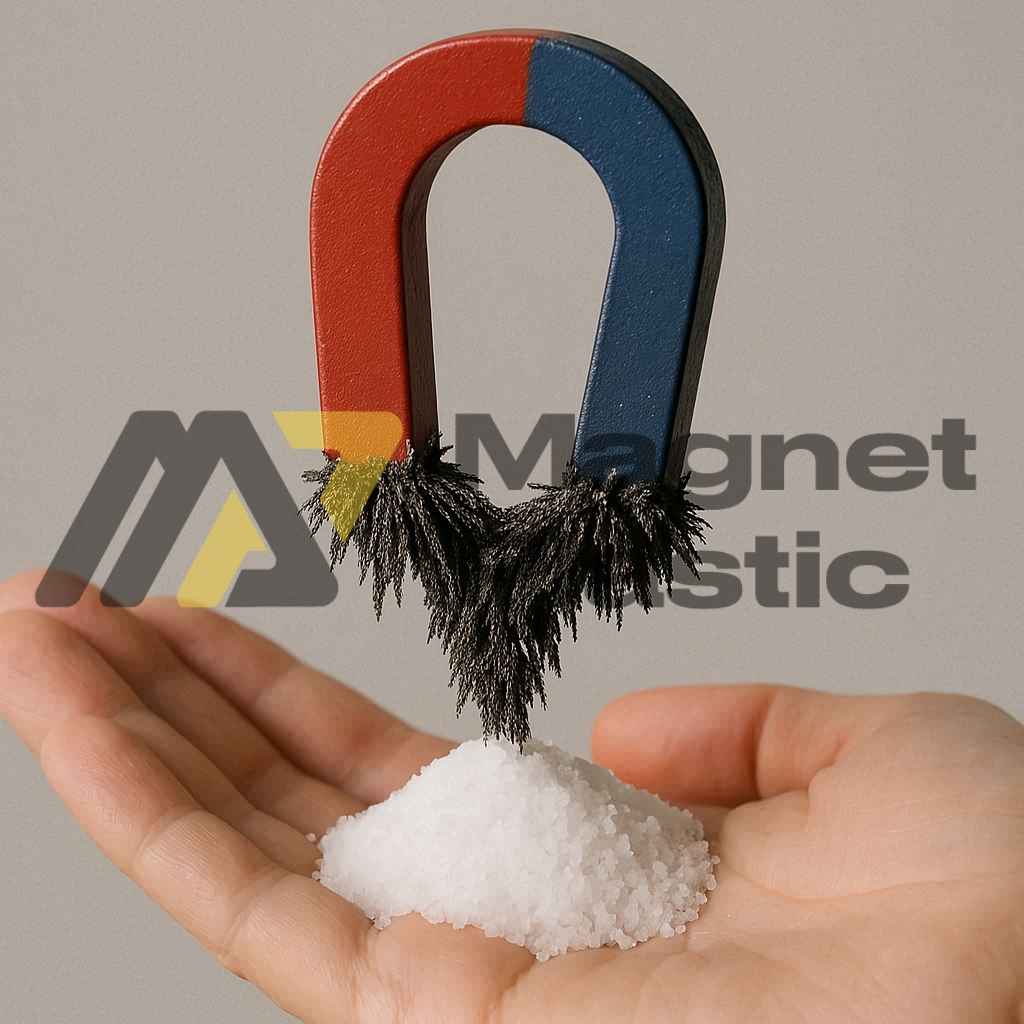Risks of Metal Contamination in Minerals and Ceramics
The presence of unwanted metals in minerals and ceramics can lead to depreciation in value and even a total loss of usability. These contaminants not only affect the aesthetic and functional quality of products, but can also cause significant damage to machinery and result in financial losses in production.
Ceramic Industry: Purity and Quality Control
In the ceramic industry, contamination by iron particles is a common issue. Even small amounts can cause defects such as “black spots” or visible oxide particles on glazes and finished products, including chamotte, quartz sand, and feldspar.
Beyond visual and structural impact, these impurities can compromise electronic processes that use ceramic materials. For this reason, the use of magnetic separation systems is a technical requirement to ensure products are completely metal-free.
Mining Industry: Controlling Contaminants During Extraction
In the mining sector, iron contamination generally comes from two sources:
- Natural contamination, from the environment.
- Mechanical contamination, caused by wear and tear on equipment and components.
The extraction of minerals such as coal, iron ore, or precious metals is carried out with large machinery, increasing the risk of metal fragments ending up in the processed material.
Wear on conveyor belts, crushers, buckets, and excavator teeth can introduce large metallic contaminants that must be removed before final processing. Magnetic separators placed at strategic points remove these risks and protect machinery from severe damage.
Applications of Magnetic Separators
Different types of separators are used to remove metal particles:
- Magnetic drum separators: remove extremely fine ferrous particles, even as small as a few microns.
- Large belt separators: eliminate larger metal pieces during material transport.
- Magnets at transfer and milling points: protect milling and crushing equipment.
These systems ensure that the final product is iron-free and help reduce downtime.
Salt Industry: Removing Ferrous Particles
Salts, particularly those extracted from the ground, often contain iron particles. In addition, during refining, scraping, sieving, and crystal breaking, microscopic particles form, causing oxidation and visible discolorations (black spots or brown and red tones).
Magnetic systems filter out these particles, ensuring the visual and chemical quality of the product. This is especially critical since salt is also used as a raw material in the chemical industry.
Chemical Industry: Purity as a Critical Requirement
In chemical processes such as the production of chlorine and bleach, raw materials must be pure. The presence of metal particles can:
- Interrupt production processes.
- Damage processing equipment.
- Lead to customer claims for lack of quality control.
For this reason, magnetic systems must be designed with high-quality materials, corrosion resistance, and specifications adapted to the properties of each raw material.
Conclusion
Metal contamination represents a serious risk in industries such as ceramics, mining, salt production, and chemicals. The use of magnetic separation systems is essential to ensure final product quality, protect machinery, and prevent economic losses. Investing in demagnetization and separation is a key strategy to maintain efficient processes and achieve high-quality results.
